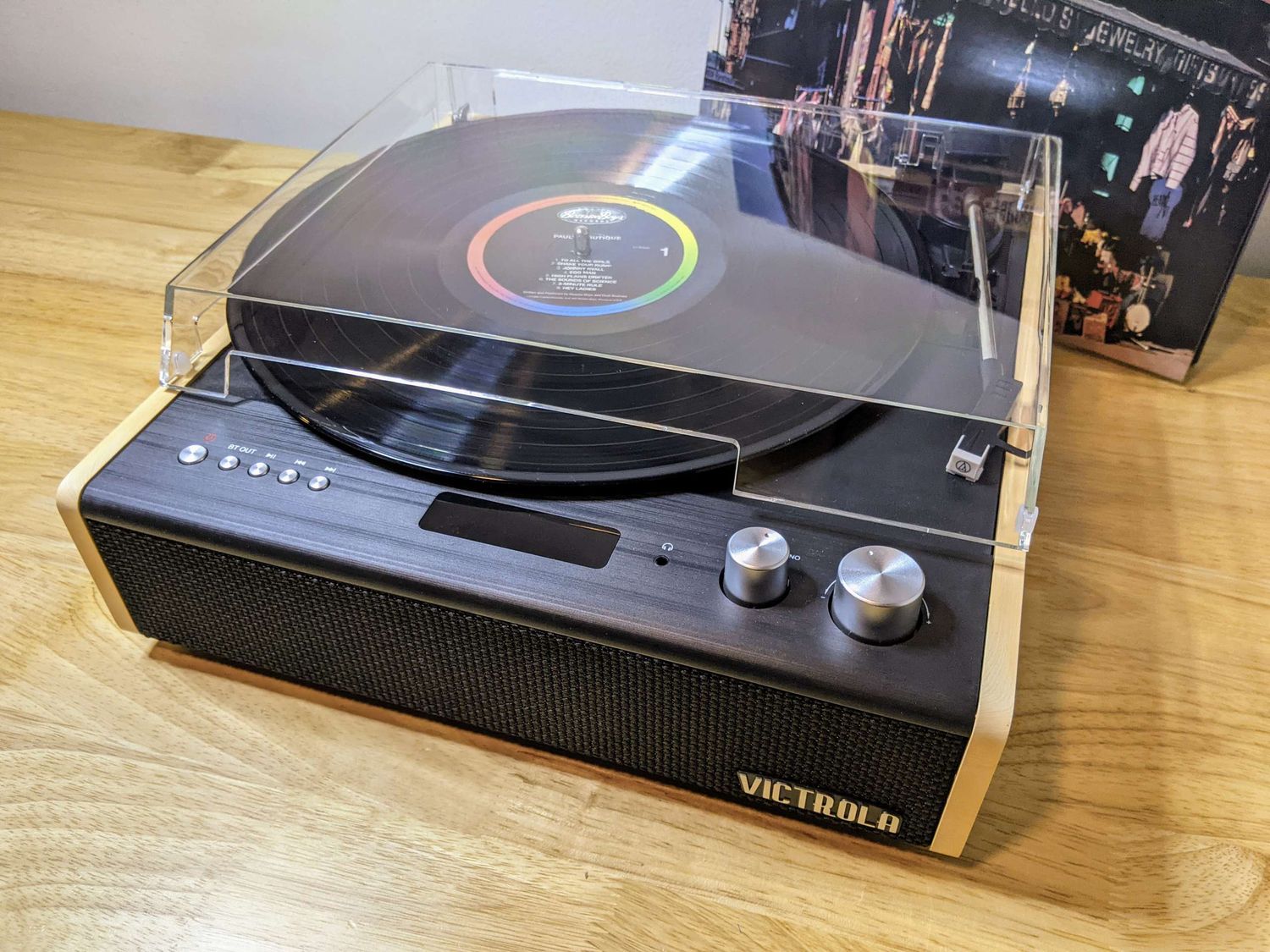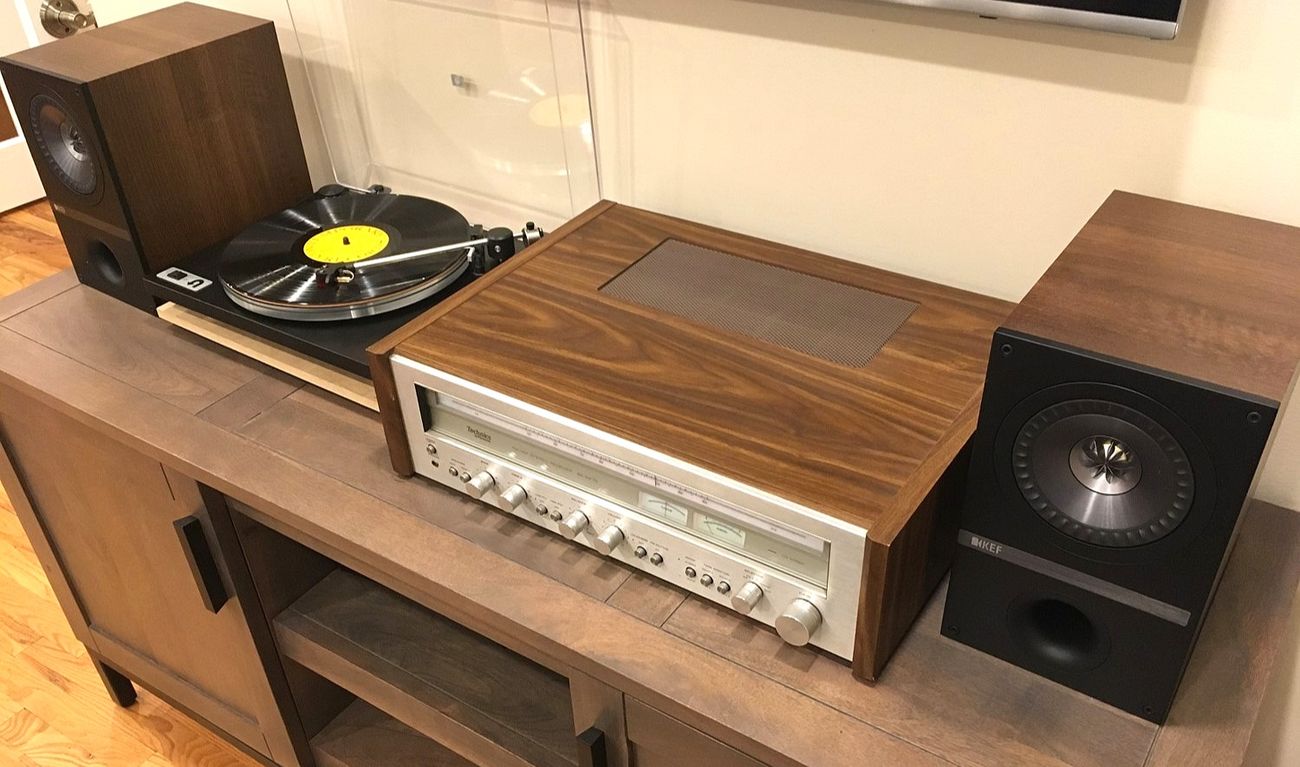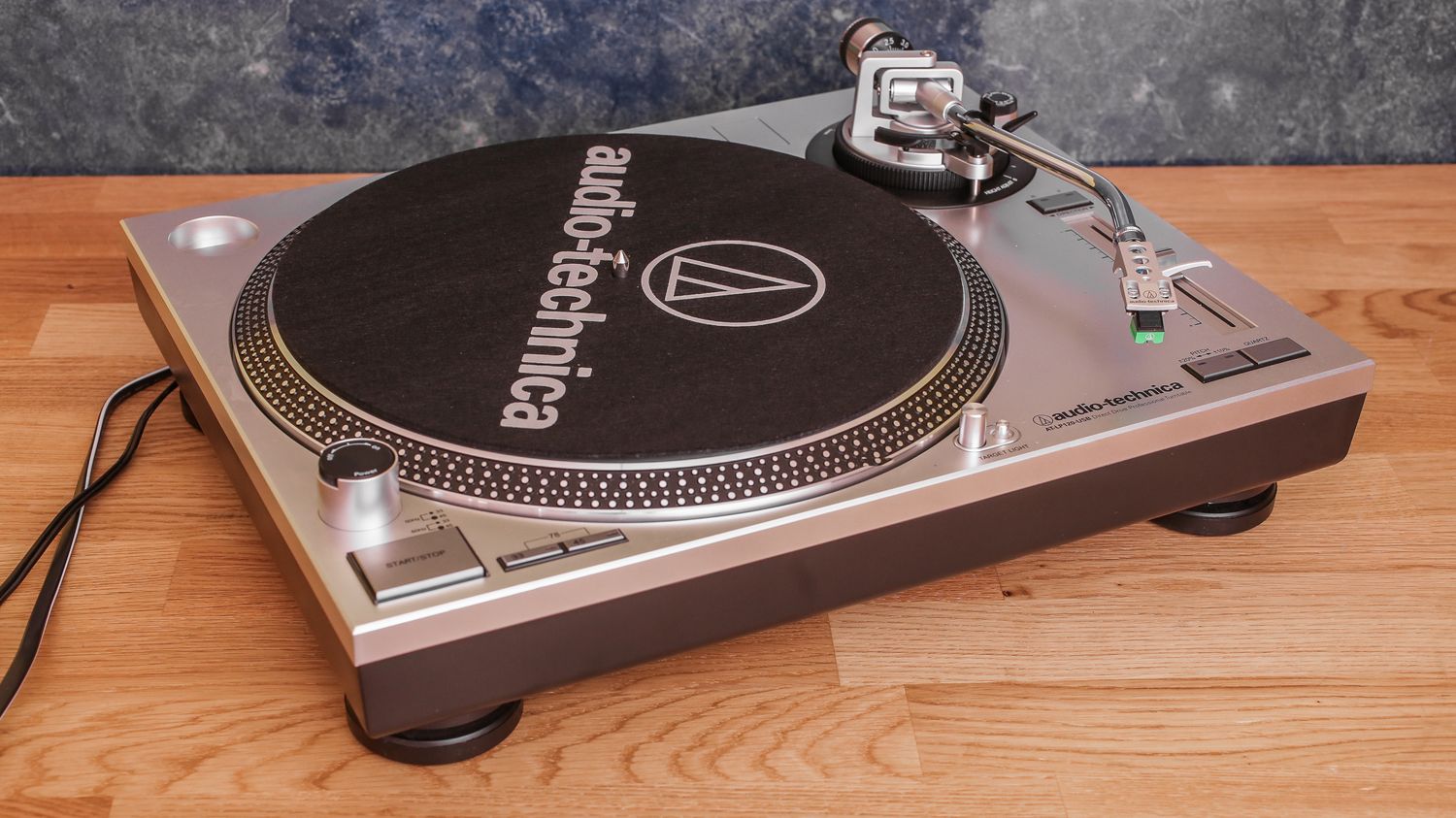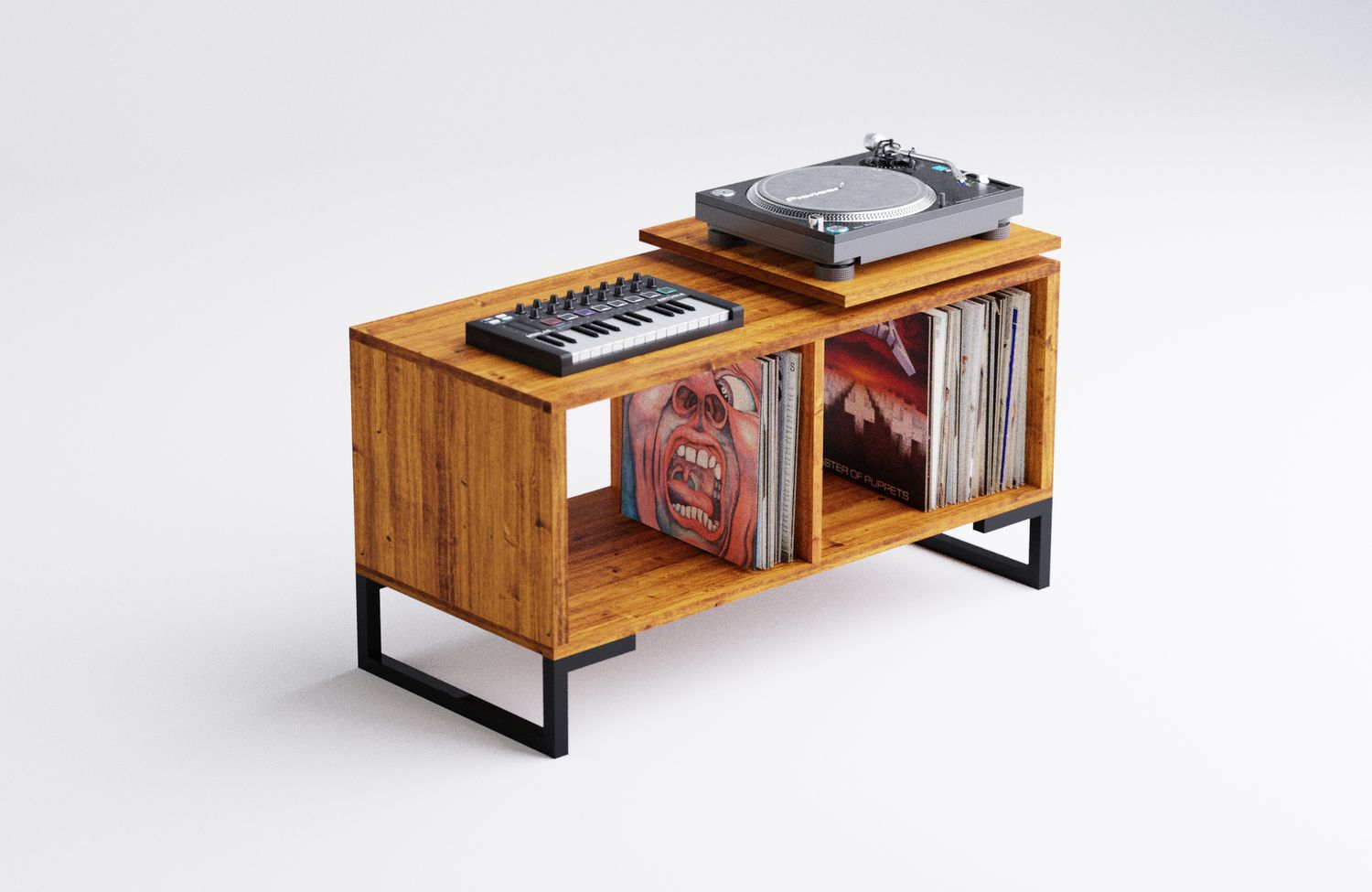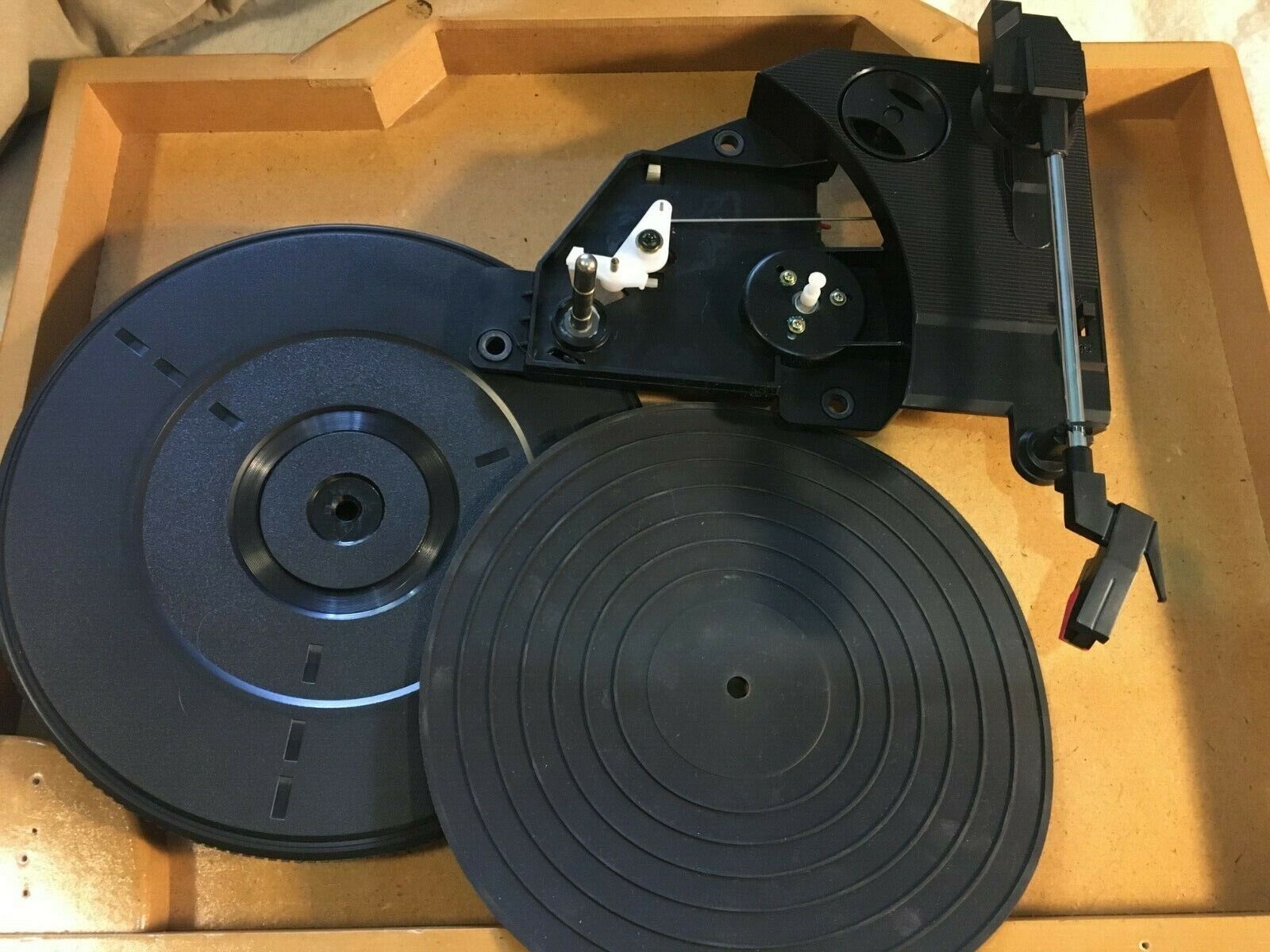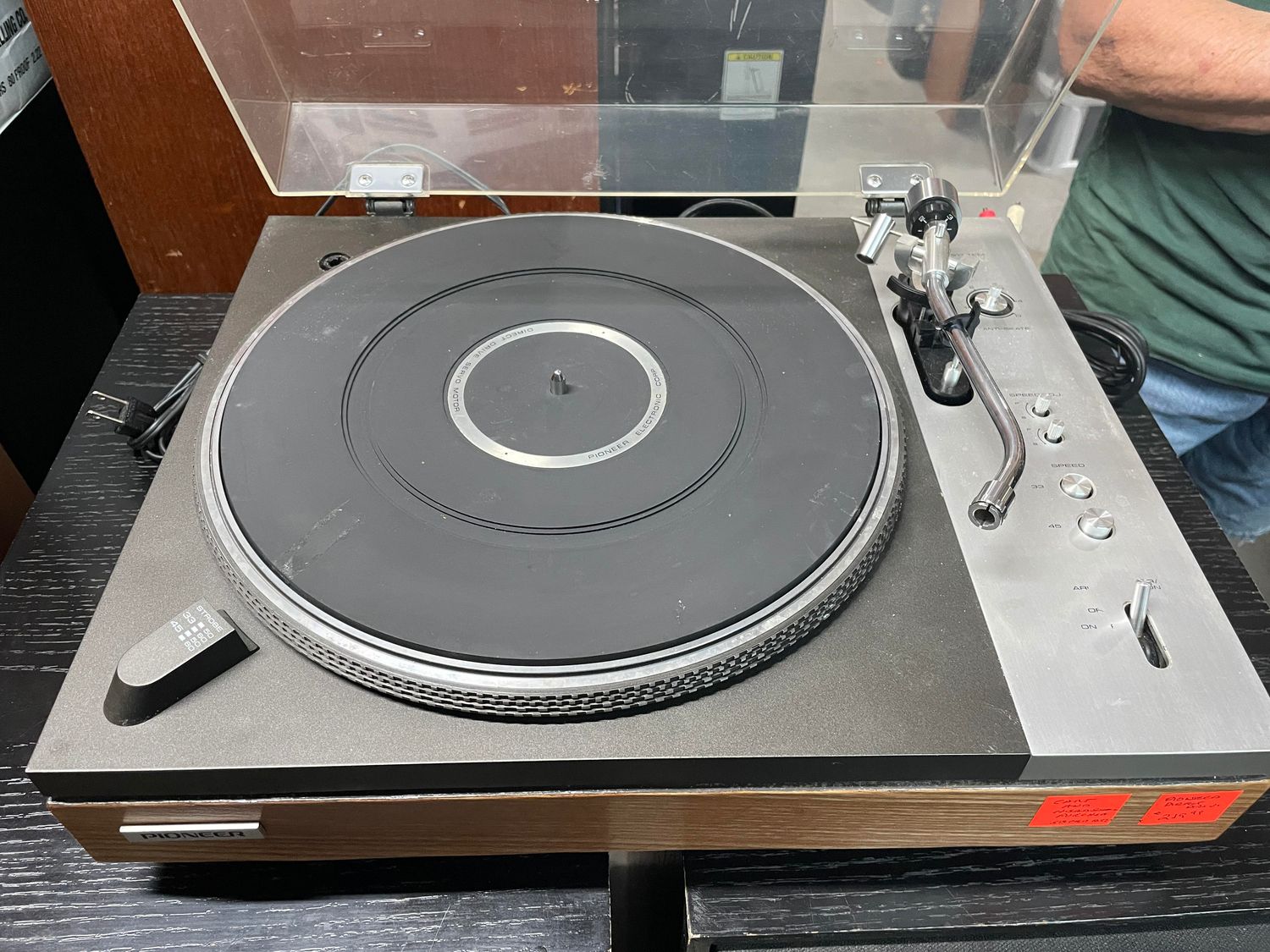Home>Devices & Equipment>Turntable>How To Use Turntable On Sony Receiver
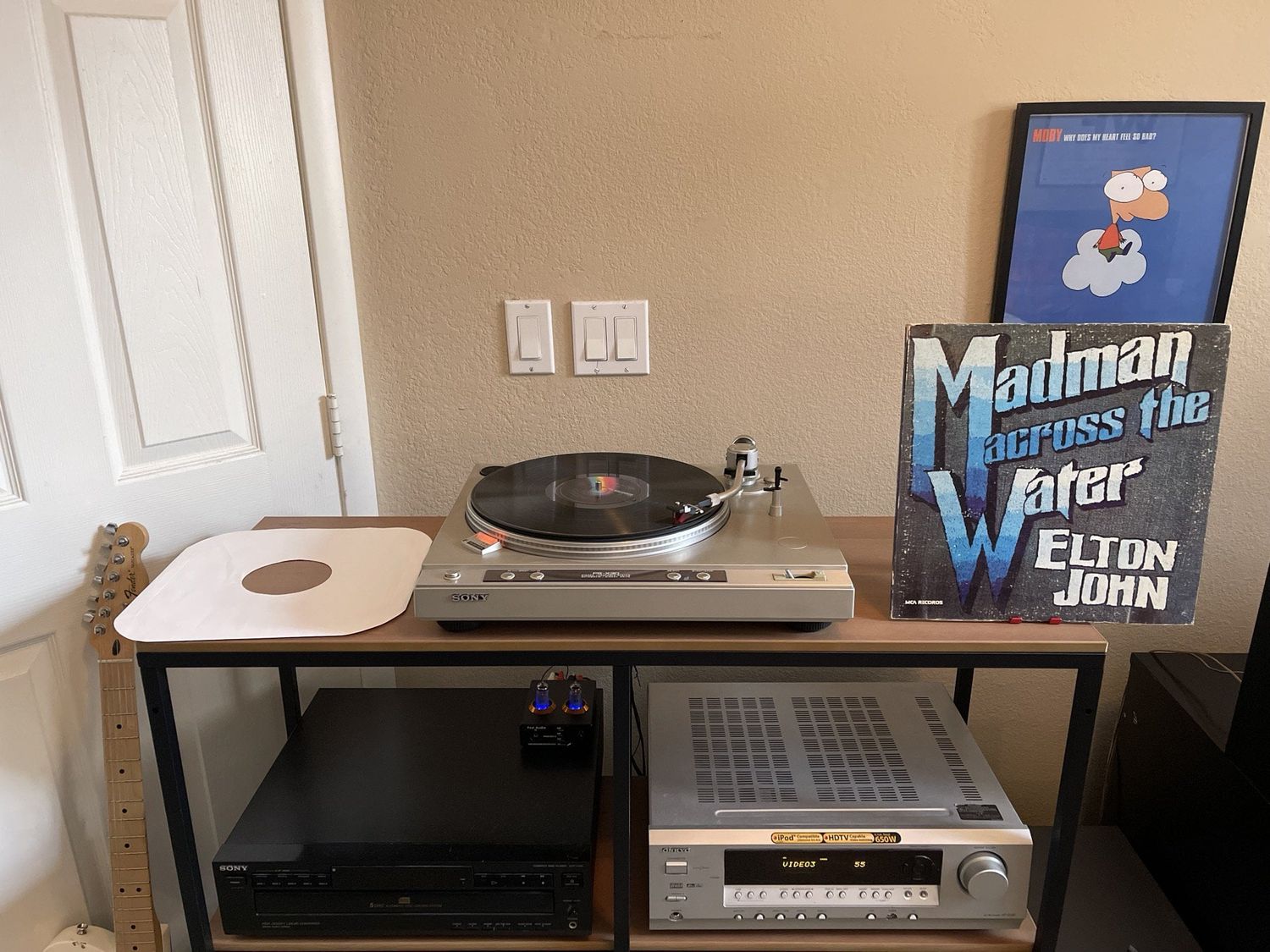

Turntable
How To Use Turntable On Sony Receiver
Modified: January 22, 2024
Learn how to use a turntable on your Sony receiver effortlessly. Discover step-by-step instructions and maximize your audio experience with the turntable feature.
(Many of the links in this article redirect to a specific reviewed product. Your purchase of these products through affiliate links helps to generate commission for AudioLover.com, at no extra cost. Learn more)
Table of Contents
Introduction
Welcome to the world of turntables and vinyl records! If you’re a music enthusiast craving the warm sound and nostalgic experience that vinyl brings, you’re in for a treat. In this article, we’ll guide you through the process of using a turntable on a Sony receiver, ensuring that you can enjoy your vinyl collection to its fullest.
Turntables have made a remarkable comeback in recent years, attracting both seasoned audiophiles and new music enthusiasts alike. Sony, a renowned brand in the audio industry, offers a range of receivers that can easily integrate with your turntable setup, enhancing your listening experience.
In this step-by-step guide, we’ll cover everything from setting up the Sony receiver to connecting the turntable and adjusting the audio settings. You’ll be spinning vinyl records in no time! We’ll also provide troubleshooting tips to help you overcome any challenges you may encounter along the way.
So, whether you’re a vinyl novice or an experienced turntable user, this article will equip you with the knowledge and confidence to unleash the full potential of your turntable on a Sony receiver. Get ready for hours of immersive, high-fidelity music playback!
Step 1: Setting up the Sony Receiver
Before you can start enjoying your turntable on the Sony receiver, you’ll need to set up the receiver itself. Follow these simple steps to get started:
- Find the ideal location: Choose a suitable spot for your Sony receiver. Ensure that it is placed on a stable surface and has enough ventilation to prevent overheating.
- Power connection: Connect the power cord to the receiver and plug it into a power outlet. Make sure the outlet is easily accessible and can handle the power requirements of the receiver.
- Speaker setup: Determine the desired speaker arrangement and connect them to the appropriate terminals on the back of the receiver. Ensure that the positive (+) and negative (-) terminals match on both the receiver and the speakers for proper sound reproduction.
- Audio/video connections: If you plan to connect other audio or video devices to the receiver, use the appropriate cables and connect them to the corresponding input/output ports on the back of the receiver. This will allow you to switch between different audio sources seamlessly.
- Antenna connection: If your Sony receiver has an AM/FM tuner, connect the provided AM and FM antennas to their respective ports to ensure clear reception of radio signals.
- Remote control setup: Insert the batteries into the remote control, ensuring they are properly aligned with the polarity markings. This will enable you to control the receiver from a distance.
Once you have completed these setup steps, your Sony receiver will be ready to connect to your turntable and deliver exceptional audio quality. Now let’s move on to the next step of connecting the turntable.
Step 2: Connecting the Turntable to the Sony Receiver
Now that you have set up your Sony receiver, it’s time to connect your turntable and unleash the magic of vinyl playback. Follow these steps to ensure a proper and secure connection:
- Check the turntable’s connections: Examine the back of your turntable and locate the RCA or audio output jacks. These are typically color-coded in red and white or labeled “Audio Out”. This is where you will connect the turntable to the receiver.
- Inspect the input jacks on the receiver: Look at the back of your Sony receiver and find the appropriate input jacks for the turntable connection. These inputs are often labeled “PHONO” or “TURNTABLE”. If your receiver doesn’t have a dedicated phono input, look for a “LINE” or “AUX” input.
- Connect the turntable to the receiver: Use RCA cables to connect the turntable’s audio output jacks to the corresponding input jacks on the receiver. Ensure that the left (white) cable is connected to the left input, and the right (red) cable is connected to the right input. Gently push the plugs into the jacks until they are securely fitted.
- Ground wire connection (if applicable): Some turntables have a separate grounding wire. If your turntable has one, find the grounding terminal on the receiver, usually marked as “GROUND” or “GND”. Connect the grounding wire from the turntable to this terminal, which helps reduce unwanted noise and interference.
- Double-check the connections: Once all the connections are made, it’s essential to ensure they are secure and properly seated. Give a gentle tug on the cables to verify their stability.
With the turntable successfully connected to the Sony receiver, you are one step closer to enjoying your vinyl collection. Continue to the next step to adjust the audio settings for optimal sound quality and performance.
Step 3: Adjusting the Audio Settings
After connecting your turntable to the Sony receiver, it’s crucial to make some audio settings adjustments to ensure the best sound quality. Follow these steps to fine-tune the settings:
- Access the receiver’s menu: Use the remote control or front panel buttons to navigate to the menu settings of the Sony receiver. Look for options related to the audio setup or input settings.
- Select the turntable input: Locate the input settings and choose the input source you connected the turntable to. If there is a specific phono input, select it. Otherwise, choose the appropriate line-level input that corresponds to the turntable connection.
- Set the correct impedance (if applicable): Some turntables have an impedance selector switch. Check the turntable’s manual to determine the appropriate impedance setting. Adjust the impedance on the receiver to match if necessary.
- Adjust the gain or phono sensitivity: If your Sony receiver has a dedicated phono input, it may offer additional settings, such as gain or phono sensitivity. Use these settings to match the output level of your turntable. Start with the default setting and make adjustments according to your preference.
- Equalizer settings: Explore the equalizer or tone control settings on your Sony receiver. These allow you to adjust the bass, treble, and overall tonal balance of the audio output. Experiment with these settings to achieve the desired sound profile for your vinyl records.
Take your time to fine-tune these settings based on your preferences and the characteristics of the vinyl records you’re playing. Each turntable and receiver combination may require slightly different adjustments, so trust your ears and make changes accordingly.
Once you have adjusted the audio settings, you’re now ready to experience the joy of playing vinyl records on your Sony receiver. Let’s move on to the next step to learn how to play your favorite albums.
Step 4: Playing Vinyl Records
With your turntable connected and the audio settings adjusted on your Sony receiver, it’s time to dive into the world of vinyl and start playing your favorite records. Follow these steps to get started:
- Prepare the record: Carefully remove the vinyl record from its sleeve, handling it by the edges to avoid fingerprints or smudges. Use a brush or microfiber cloth to gently remove any dust or debris from the surface of the record.
- Power on the equipment: Turn on your Sony receiver and ensure that the turntable is powered up as well. Double-check that the receiver is set to the correct input source for the turntable.
- Select the correct speed: Vinyl records come in different speeds, typically 33 1/3, 45, and 78 RPM (rotations per minute). Set the turntable to the appropriate speed based on the record you’re about to play. Most modern turntables come with a speed selector switch or button.
- Place the record on the turntable: Gently place the vinyl record onto the turntable platter, aligning the center spindle with the center hole of the record. Ensure that the record sits flat on the platter and is properly centered.
- Lower the tonearm: Carefully lift the tonearm using the cueing lever or by hand, positioning it over the outer edge of the record. Slowly lower the tonearm onto the record, allowing the stylus to make contact with the grooves.
- Enjoy the music: Sit back, relax, and let the music play! Listen to the warm, analog sound as the stylus tracks the grooves of the vinyl. Control the volume and other playback options using the controls on your Sony receiver.
Remember to handle vinyl records with care and avoid touching the playing surface, as this can interfere with the sound quality. When you’re done listening, use the cueing lever to lift the tonearm off the record, and carefully return it to its resting position.
Now that you know how to play vinyl records on your Sony receiver, it’s time to sit back and immerse yourself in the rich, authentic sound that vinyl is famous for. Explore your record collection, discover new favorites, and enjoy a truly nostalgic listening experience.
Step 5: Troubleshooting Tips
While using a turntable on a Sony receiver is generally straightforward, you may encounter some common issues along the way. Here are a few troubleshooting tips to help you overcome any challenges:
- No sound or low volume: Make sure the turntable is properly connected to the receiver. Check that the cables are securely plugged into the correct input jacks. Also, confirm that the receiver is set to the appropriate input source and the volume is turned up. If the issue persists, check the cartridge and stylus on your turntable for any damage or misalignment.
- Excessive noise or hum: If you hear unwanted noise or a persistent hum, there may be a grounding issue. Ensure that the turntable’s grounding wire is properly connected to the receiver’s grounding terminal. If the problem continues, try moving the turntable and receiver away from any potential sources of electromagnetic interference, such as power cables or electronic devices.
- Poor sound quality: If the sound quality from your turntable is not up to par, there are a few factors to consider. Firstly, check the condition of your vinyl records for dust, scratches, or warping, as these can affect sound reproduction. Secondly, make sure the stylus is in good condition and properly aligned. Adjusting the tracking force and anti-skate settings on your turntable may also improve sound quality.
- Skipping or jumping stylus: If the stylus skips or jumps across the record grooves, it may be due to an improper tracking force or an issue with the cartridge alignment. Check the manufacturer’s guidelines for the recommended tracking force and adjust it accordingly. Additionally, ensure that the turntable is placed on a stable surface and that the record is clean and undamaged.
- Unresponsive or malfunctioning controls: If the controls on your Sony receiver are unresponsive or malfunctioning, check the remote control batteries and replace them if necessary. If the issue persists, try resetting the receiver to its factory settings. Consult the receiver’s manual for specific instructions on how to perform a reset.
If you experience any other technical difficulties or have specific questions about your Sony receiver or turntable setup, it’s always a good idea to refer to the respective manuals or consult customer support for assistance.
By following these troubleshooting tips, you can overcome common issues and ensure a smooth and enjoyable experience while using your turntable on a Sony receiver. Now, sit back, relax, and indulge in the captivating sound of vinyl.
Conclusion
Congratulations! You’ve successfully learned how to set up and use a turntable on a Sony receiver, opening the door to a world of rich, high-fidelity music. By following the step-by-step guide in this article, you have gained the knowledge and confidence to enjoy your vinyl collection with exceptional sound quality.
From setting up the Sony receiver and connecting the turntable to adjusting the audio settings and playing vinyl records, each step is crucial in creating an immersive and authentic listening experience. The Sony receiver’s integration with the turntable ensures that you can fully appreciate the warmth and depth of sound that vinyl records offer.
Remember, though, that each turntable and receiver combination may have its own unique setup requirements and considerations. Always refer to the respective manuals for detailed instructions specific to your equipment.
Whether you’re a long-time vinyl enthusiast or new to the world of turntables, the joy of playing vinyl records on a Sony receiver is unmatched. The nostalgia, the tactile experience, and the beautifully crafted sound will transport you to another era of music appreciation.
So, get ready to dust off your favorite albums, carefully place them on the turntable, and let the needle drop onto the groove. Indulge in the timelessness of vinyl, savor every note, and rediscover the magic of music through the harmonious combination of a turntable and a Sony receiver.
Enjoy your vinyl journey!

